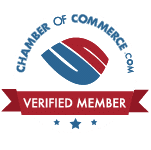The Hidden Costs of Employee Turnover, and How Benefits Can Help
- ewalker223
- Feb 28
- 3 min read

Introduction
Employee turnover isn’t just an HR headache—it’s a major financial burden for businesses. The cost of replacing an employee can range from 50% to 200% of their salary, impacting productivity, morale, and revenue. However, offering competitive employee benefits can significantly reduce turnover and improve workplace satisfaction.
In this post, we’ll break down the hidden costs of employee turnover and explore how strategic benefits packages can improve retention and save businesses money.
The Financial Impact of Employee Turnover
Employee turnover costs businesses more than they realize. According to Gallup, U.S. companies lose $1 trillion annually due to voluntary employee departures. Here’s a breakdown of these costs:
1. Hiring & Recruitment Costs
Finding and hiring new employees takes time and money. The Society for Human Resource Management (SHRM) estimates the average cost per hire at $4,700. This includes:
Job postings
Background checks
Interviewing and screening processes
Onboarding and training expenses
Source: SHRM - The True Cost of Turnover
2. Productivity Loss
When employees leave, productivity suffers. Research shows that it takes up to six months for a new hire to reach full productivity, leading to revenue losses.
3. Training & Development Costs
Employee training is essential, but it’s also expensive. U.S. companies spend an average of $1,207 per employee per year on training programs.
4. Loss of Institutional Knowledge
When experienced employees leave, they take valuable knowledge, skills, and relationships with them. This can impact team collaboration, customer satisfaction, and overall business performance.
How Strategic Benefits Reduce Turnover
A strong Total Rewards strategy—including health insurance, retirement plans, and wellness programs—can significantly improve retention. Here’s how:
1. Health & Wellness Benefits
Employees prioritize healthcare benefits, and companies that provide comprehensive health coverage experience higher retention rates. A study by MetLife found that 73% of employees are more likely to stay with an employer that offers strong health benefits.
Employer Best Practices:
Offer health, dental, and vision insurance.
Provide mental health support & Employee Assistance Programs (EAPs).
Introduce wellness stipends for gym memberships and therapy.
2. Retirement & Financial Wellness Programs
Financial insecurity is a leading cause of job dissatisfaction. According to PwC, 57% of employees say financial stress impacts their work performance.
Employer Best Practices:
Offer 401(k) plans with employer matching.
Provide financial education workshops.
Implement student loan assistance programs.
3. Paid Time Off & Work-Life Balance
Work-life balance directly affects job satisfaction. Employees experiencing burnout are 2.6 times more likely to quit.
Employer Best Practices:
Provide generous paid time off (PTO).
Offer remote and hybrid work options.
Encourage mental health days.
4. Career Growth & Recognition
Employees stay longer at companies that invest in their career growth. A LinkedIn study found that employees who make internal career moves are 64% more likely to stay with their employer after three years.
Employer Best Practices:
Offer learning and development stipends.
Create clear career progression plans.
Recognize employee contributions with bonuses and awards.
Conclusion: Investing in Benefits Saves Money
Reducing employee turnover is critical for long-term business success. Companies that invest in competitive benefits experience:✔ Lower hiring and training costs✔ Improved productivity and engagement✔ Increased job satisfaction and loyalty
A well-structured Total Rewards program isn’t just an employee perk—it’s a cost-saving strategy that drives business growth.
Ready to Improve Your Retention Strategy?
If you're looking to reduce turnover and enhance your employee benefits, Worklife Benefit Consultants can help you develop a cost-effective strategy tailored to your business needs.
📩 Contact us today to learn more!
